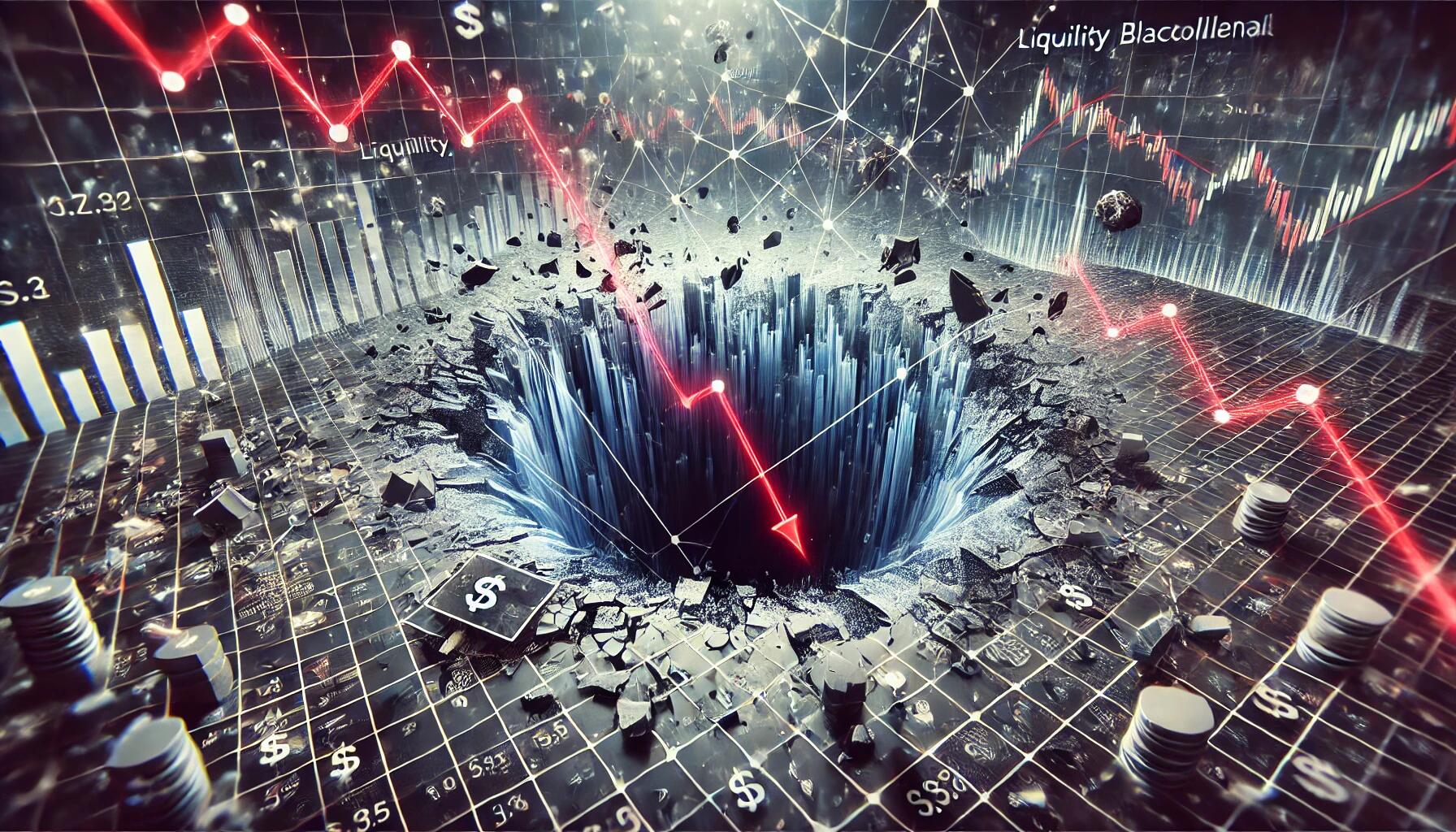asyncmind on Nostr: The aggressive expansion of credit without reserves leads to a situation where the ...
The aggressive expansion of credit without reserves leads to a situation where the underlying financial infrastructure becomes increasingly fragile, setting the stage for a collapse. Here’s how this can trigger a decimation event (which we’ll call *Decimation 2025*) and what mechanisms contribute to this breakdown:
### 1. **Runaway Credit Creation Without Backing**
When financial institutions issue credit without adequate reserve backing, liabilities exceed actual assets. This is like overloading a system with requests without adequate processing power, resulting in inevitable failure. In a financial context, this means credit outpaces real value, creating “phantom” wealth that looks viable only on paper.
### 2. **Systemic Imbalance and Network Fragility**
The lack of a synchronized ledger or consensus mechanism means there’s no unified view of credit issuance. When each institution operates independently, the debt-to-reserve ratios become inconsistent across the network. This decentralization without cohesion causes parts of the financial system to become misaligned, leading to a fragile network where one major failure (such as a large bank failing to meet obligations) cascades throughout the economy.
### 3. **Debt Supernova and Mass Deleveraging**
As credit expands without sufficient backing, debt levels reach unsustainable highs. Eventually, the trust breaks down—investors, creditors, and the public recognize that the credit issued far exceeds the actual value or assets held. This triggers a mass deleveraging event, where investors rush to liquidate assets, sell-off holdings, and withdraw deposits. This "credit contraction" is akin to a supernova where, upon realizing the instability, the market implodes rapidly.
### 4. **Liquidity Black Hole and Credit Freeze**
With mass deleveraging, liquidity dries up. Institutions become unwilling to lend to each other, fearing that the debt they are inheriting is worthless. This mirrors a *liquidity black hole*, where money effectively disappears from circulation, creating a freeze in credit flow. Everyday transactions halt, unemployment rises, and economic activity comes to a standstill.
### 5. **Default Cascade and Collateral Collapse**
As institutions face mounting liabilities without adequate reserves, defaults surge. This creates a cascade where collateral (used to back loans) rapidly devalues, amplifying losses across the system. It’s a self-reinforcing mechanism that accelerates collapse as fewer institutions can stay solvent, leading to a sharp economic contraction.
### 6. **Trust Crisis and the "Decimation 2025"**
The culmination of these events leads to a systemic crisis, referred to as *Decimation 2025*. Trust in fiat-based credit systems erodes entirely, and people lose faith in the ability of these institutions to hold and transfer value. This scenario could give rise to a shift toward decentralized systems, where consensus mechanisms ensure reliability and integrity—a structure fiat-based systems cannot achieve without a robust backing or a unifying framework.
#Decimation2025
#CreditCollapse
#LiquidityCrisis
#EconomicFragility
#DebtSupernova
#FinancialCollapse
#Decentralization
#TrustCrisis
#Decimation2025

### 1. **Runaway Credit Creation Without Backing**
When financial institutions issue credit without adequate reserve backing, liabilities exceed actual assets. This is like overloading a system with requests without adequate processing power, resulting in inevitable failure. In a financial context, this means credit outpaces real value, creating “phantom” wealth that looks viable only on paper.
### 2. **Systemic Imbalance and Network Fragility**
The lack of a synchronized ledger or consensus mechanism means there’s no unified view of credit issuance. When each institution operates independently, the debt-to-reserve ratios become inconsistent across the network. This decentralization without cohesion causes parts of the financial system to become misaligned, leading to a fragile network where one major failure (such as a large bank failing to meet obligations) cascades throughout the economy.
### 3. **Debt Supernova and Mass Deleveraging**
As credit expands without sufficient backing, debt levels reach unsustainable highs. Eventually, the trust breaks down—investors, creditors, and the public recognize that the credit issued far exceeds the actual value or assets held. This triggers a mass deleveraging event, where investors rush to liquidate assets, sell-off holdings, and withdraw deposits. This "credit contraction" is akin to a supernova where, upon realizing the instability, the market implodes rapidly.
### 4. **Liquidity Black Hole and Credit Freeze**
With mass deleveraging, liquidity dries up. Institutions become unwilling to lend to each other, fearing that the debt they are inheriting is worthless. This mirrors a *liquidity black hole*, where money effectively disappears from circulation, creating a freeze in credit flow. Everyday transactions halt, unemployment rises, and economic activity comes to a standstill.
### 5. **Default Cascade and Collateral Collapse**
As institutions face mounting liabilities without adequate reserves, defaults surge. This creates a cascade where collateral (used to back loans) rapidly devalues, amplifying losses across the system. It’s a self-reinforcing mechanism that accelerates collapse as fewer institutions can stay solvent, leading to a sharp economic contraction.
### 6. **Trust Crisis and the "Decimation 2025"**
The culmination of these events leads to a systemic crisis, referred to as *Decimation 2025*. Trust in fiat-based credit systems erodes entirely, and people lose faith in the ability of these institutions to hold and transfer value. This scenario could give rise to a shift toward decentralized systems, where consensus mechanisms ensure reliability and integrity—a structure fiat-based systems cannot achieve without a robust backing or a unifying framework.
#Decimation2025
#CreditCollapse
#LiquidityCrisis
#EconomicFragility
#DebtSupernova
#FinancialCollapse
#Decentralization
#TrustCrisis
#Decimation2025

